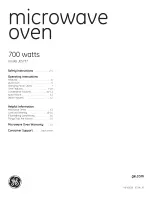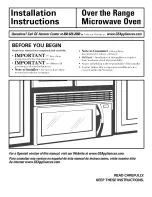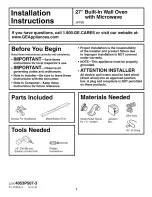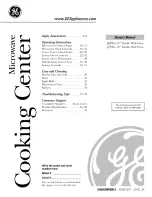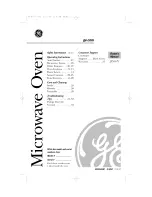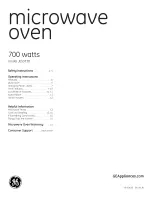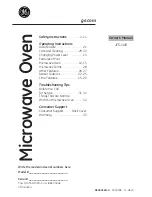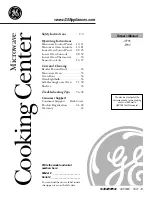
6
when the appliance is running, the power supply voltage does not deviate from the rated voltage value by
±10%.
Ensure that the power supply cable does not come into contact with the appliance's hot parts.
If the power supply cable is damaged, it must be replaced by the manufacturer or their technical support
service, or in any case by a person with similar qualifications, to prevent any risk.
The appliance must be connected to an equipotential system the effectiveness of which must be suitably
assessed according to applicable regulations. This connection must be set up between appliances through
the suitable terminal which is marked with the symbol
. The equipotential conductor must have a
minimum section of 2.5mm
2
.
The equipotential terminal is on the back of the appliance (see the attached “Technical Data Sheet”).
2.8 Power supply cable connection (replacement)
The appliance is fitted with a power supply cable connected to the internal terminal board; if it needs to be
replaced with a longer one or because it is damaged, it can only be done with another cable having the
same electrical characteristics (insulation type/number of conductors/size of conductors in mm
²
).
Remove the back and/or the right side of the appliance to access the power supply terminal board. Loosen
the cable retainer located on the rear (at the bottom) of the appliance (see the attached “Technical Data
Sheet”). Disconnect the power supply cable from the terminal board and remove it from the relative cable
gland. Insert the new power supply cable in the cable gland up to the terminal board. Prepare the
conductors for the connection with the terminal board so that the earth conductor is the last to be
extracted from its terminal should the cable be accidentally pulled.
The cable connection must be type "Y" and the insulation of the cable sheath must match type H07RN-F.
The correct section of the cable is shown on the diagram of the power supply terminal board, according to
the type of connection between appliance and mains (The cable must match the features in the attached
"Technical Data Sheet").
When connected, tighten the cable retainer on the back of the appliance and reassemble the left side
and/or the back.
230V
~
Connect the conductor of phase (L) of the cable to the terminals of the terminal board marked with “1”,
“2” and “3” (brown conductor) and the neutral (N) conductor to the terminals marked with “4” and “5”
(blue conductor); the earth conductor (yellow/green) must be connected to the terminal marked with the
symbol
(see diagram available by the terminal board).
2.9 Connection to the water mains
The appliance must be supplied with drinking water at a maximum temperature of 30°C.
The water pressure must be between 100 and 200 kPa (1.0 -2.0 bar).
If the mains pressure exceeds 2.0 bar, install a pressure reducer upstream of the appliance.
If the value is lower than 1.0 bar use a pump to raise the pressure.
2.9.1 Water inlet for humidification / steam
The appliance is equipped with a standardised flexible hose (1.5 metres) with threaded
¾
” female fittings
and relative gaskets (Fig. 1). Old joints must not be re-used.
The appliance must be supplied with softened drinking water with hardness between 0.5°f and 3°f. It is
obligatory to use a softener to reduce the formation of limescale inside the cooking chamber.
THE
MANUFACTURING COMPANY DISCLAIMS ANY LIABILITY FOR DIRECT OR INDIRECT DAMAGE CAUSED TO THE
HOOD DUE TO FAILURE TO COMPLY WITH THIS DIRECTIVE.
The connection to the water mains must be set up through the
¾
” threaded solenoid valve located on the
back (at the bottom) of the appliance (see the attached “Technical Data Sheet”), using the supplied flexible
hose, with a mechanical filter and stopcock installed in between (before connecting the filter, drain off a
certain amount of water to flush any dirt out of the hose).
Содержание 08560210
Страница 1: ...TRANSLATION OF ORIGINAL OPERATING AND INSTRUCTION MANUAL NEXT OVEN 08560210 ...
Страница 14: ...13 REV 0 ...















